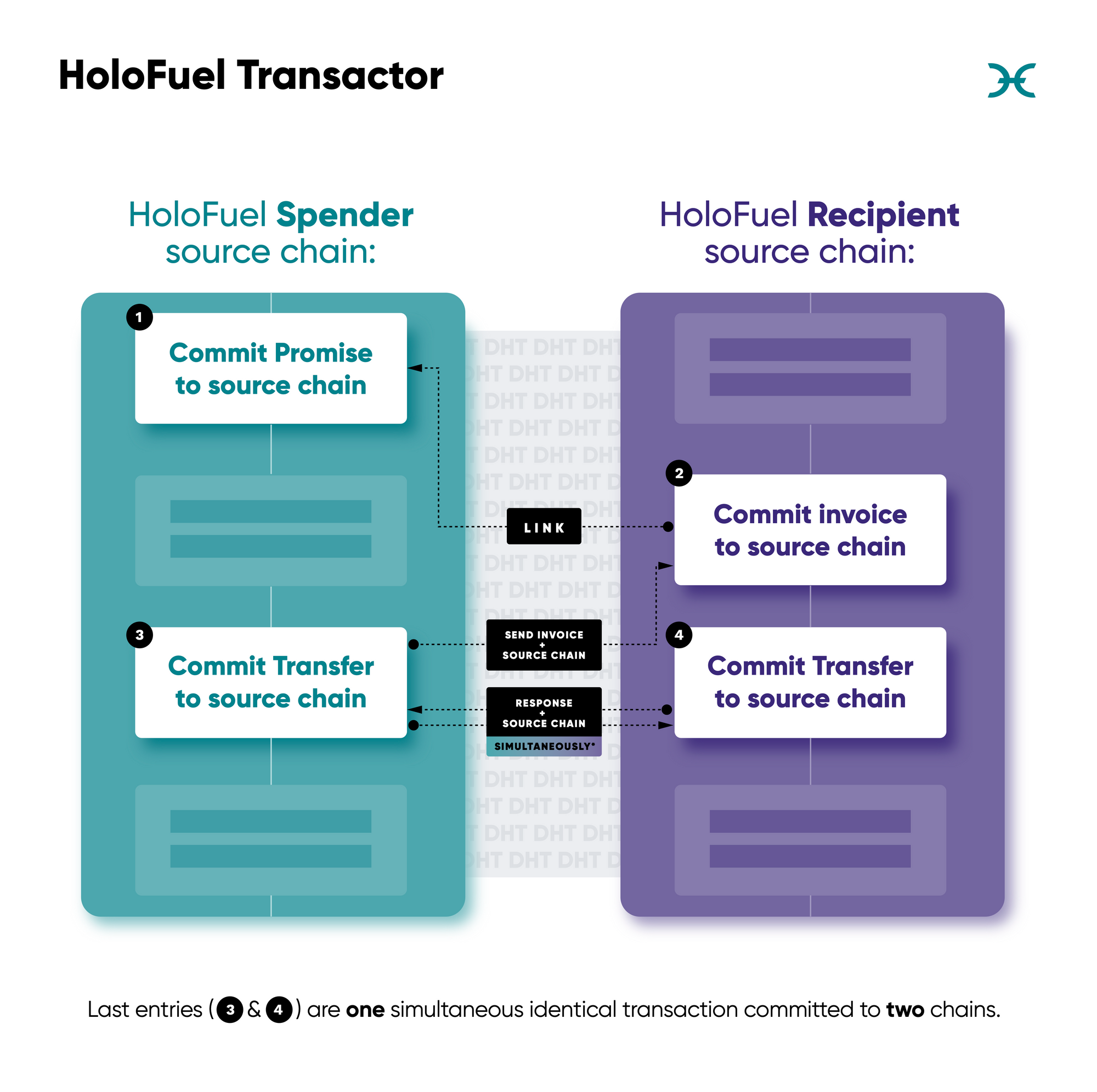Summary
This week we’re taking an in-depth look at the HoloFuel transactor, which operates “under the hood” of the HoloFuel UI we discussed in the Dev Pulse 52. This will give you some insight into how HoloFuel’s agent-centric design gives it an advantage over other digital currencies. Understanding how the transactor works is important—not only for hApp developers, but also for promoting network user adoption as a way to provide asset backing of the currency. Holo and Holochain are promoting HoloFuel as the micro-currency that powers the Holo Hosting network.
Highlights
- The HoloFuel transactor
- Cancelling a transaction
- Requesting funds
Details
The HoloFuel transactor
As a follow-up to our recent post on the HoloFuel UI, we’re going to do a deep dive into the HoloFuel transactor. It is perhaps the most critical component in building out the HoloFuel ecosystem within the larger Holo ecosystem. Making sure the transactor works properly, particularly when it comes to payments and hosting, is a priority for us as we progress through the Alpha Testnet.
The HoloFuel transactor is the hApp for sending and receiving HoloFuel, and similar in many respects to a Bitcoin wallet. We’ve already shown you what the UI will look like from the user’s perspective, but it’s important to remember that the UI acts as a bridge to the HoloFuel transactor, which is where the actual process of moving HoloFuel to various destinations takes place. We therefore want you to see the underlying product functions and what makes our approach to HoloFuel different from other digital currencies.
The key element that distinguishes the HoloFuel transactor from others is its agent-centric design. In other words, it is up to both the sender and receiver of HoloFuel to sign transactions confirming them. This marks a difference from Bitcoin, Ethereum, and similar currencies, where only the sender signs the transaction. This simple distinction creates a more accountable experience, yet intuitive and forgiving, experience.
To see how this works in practice, let’s look at two scenarios—cancelling a transaction in progress and requesting funds.

Cancelling a transaction
A HoloFuel transaction goes through a series of verification and signing stages. Until the recipient has committed the transaction to their source chain, it remains in a pending state. You therefore have a window in which you can cancel the transaction if you accidentally send someone fundsor find suspicious activity on your counterparty’s source chain. Already, you can see an advantage over blockchain-based currencies, in which transactions—even accidental or fraudulent ones—are irrevocable once sent. This pending state also helps eliminate the frustrating cryptocurrency problem of sending HoloFuel to the wrong address.
Requesting funds
Unlike other currencies that are created from mining or staking, HoloFuel is backed by (and redeemable for) the useful work of hosting by people like you from across the globe. Like hApp developers, hosts are active participants in the HoloFuel ecosystem and are able to not only send, but issue requests for payment. Again, with our agent-centric approach, if the agent who is being asked to send funds declines to do so, they can reject the request. This gives HoloFuel a user experience on par with modern consumer payment apps like Venmo, PayPal, or WeChat—as well as a smaller learning curve than other digital currencies.
In addition, the request function can be integrated with logging hApps to handle invoicing. This makes it much simpler to build an e-commerce operation fully within Holochain without the need for third-party invoicing or other data collection/storage services—it can be done simply by integrating HoloFuel.
Holochain Core Concepts and Tutorials
We want to hear from you! Help us create documentation that would be most beneficial to your understanding of Holochain and aid you in building your apps. If you have already read, explored, or completed the Holochain Core Concepts and Tutorials, we would appreciate your input on this quick survey to tell us what you thought about your experience and how we might help you further!
Development Status:
- Holochain Core Released: 0.0.38-alpha12 | Changelog | Next: 0.0.39-alpha1
- Holoscape Released: v0.0.3-alpha
- Holonix Released: v0.0.44 Try-o-rama Released: v0.2.0




